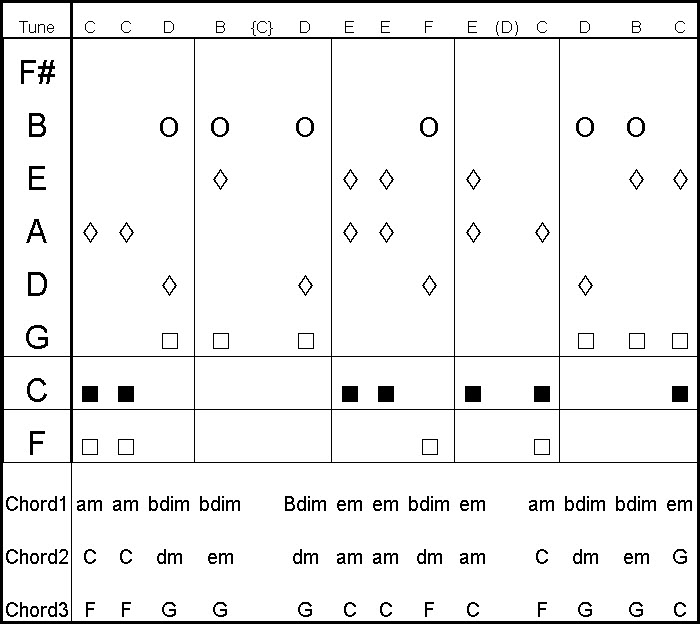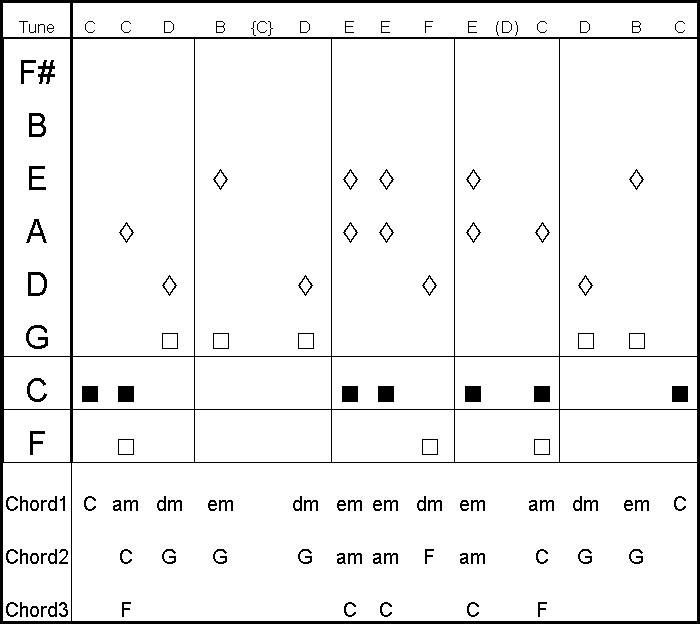Harmonization
Harmonization
The ability to harmonize a melody effectively is crucial in the study of music. The choice of chord to accompany a tune is vital in giving songs integrity. Any harmonization task can be made easier and more effective with the best possible understanding of chords, chord progressions and proper use of harmony. So let us have a look at how we can use SeeChord to help.
Here are the notes that make up the first part of the English National Anthem. The notes in brackets are “passing notes” and can therefore do not need harmonizing in a basic exercise.
C C D B (C) D. E E F E (D) C. D C B C.
The piece is in the key of C so the chords that we would expect to be using are:
C major – C E G
D minor – D F A
E minor – E G B
F major – F A C
G major – G B D
A minor – A C E
B dim – B D F.
Now we can plot all the appropriate chords for each note on a SeeChord chart by simply picking the chords that contain that note in them. The chart looks like this:

Now with a little basic knowledge about music, we can eliminate many of these options. For example, it would be nice for our piece to start and finish on the tonic which is C. Also the b diminished chord is probably a little adventurous for our simple 8-bar tune. So let’s get rid of the chords we are not concerned with:

Now let us apply some knowledge of how SeeChord charts usually look. We want to emulate the pattern of jumping up away from C and then falling back down in step wherever possible. Our first attempt might therefore give us this:
[seeChordViewer src=”/content/Application/Harmonization/harmonization3-viewer”]
The chords written in the chord1 row now give the result of our harmonization. Now it may be that this is not the “correct” harmonization of this piece, but we know it is following some basic rules of harmony and that we are making good use of the falling fifth which is crucial to a solid progression. From this start we can try out some other ideas. For example we might want to be a little more adventurous and use the F major and the emin chord in this passage like this:
[seeChordViewer src=”/content/Application/Harmonization/harmonization4-viewer”]
The huge advantage of using a SeeChord chart in this situation is that we can see the options available to us and how those options fit in with the overall shape of the harmony.
This is not the whole picture as 6th and 7th chords can add another level of complexity, and obviously a good ear is a huge asset for a task like this, but it is a great starting point for writing solid chord progressions under melodies.